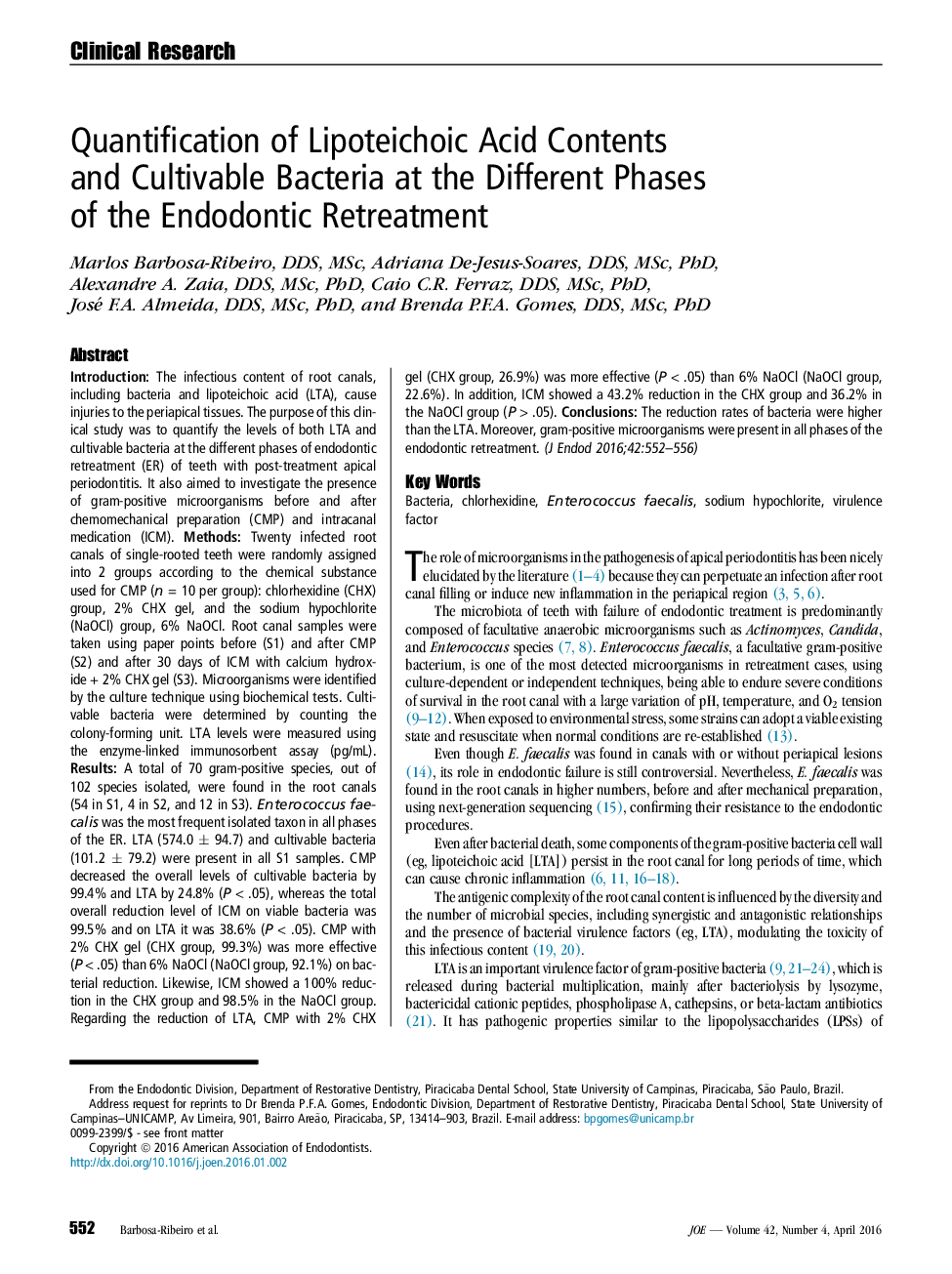| کد مقاله | کد نشریه | سال انتشار | مقاله انگلیسی | نسخه تمام متن |
|---|---|---|---|---|
| 3149939 | 1197487 | 2016 | 5 صفحه PDF | دانلود رایگان |
IntroductionThe infectious content of root canals, including bacteria and lipoteichoic acid (LTA), cause injuries to the periapical tissues. The purpose of this clinical study was to quantify the levels of both LTA and cultivable bacteria at the different phases of endodontic retreatment (ER) of teeth with post-treatment apical periodontitis. It also aimed to investigate the presence of gram-positive microorganisms before and after chemomechanical preparation (CMP) and intracanal medication (ICM).MethodsTwenty infected root canals of single-rooted teeth were randomly assigned into 2 groups according to the chemical substance used for CMP (n = 10 per group): chlorhexidine (CHX) group, 2% CHX gel, and the sodium hypochlorite (NaOCl) group, 6% NaOCl. Root canal samples were taken using paper points before (S1) and after CMP (S2) and after 30 days of ICM with calcium hydroxide + 2% CHX gel (S3). Microorganisms were identified by the culture technique using biochemical tests. Cultivable bacteria were determined by counting the colony-forming unit. LTA levels were measured using the enzyme-linked immunosorbent assay (pg/mL).ResultsA total of 70 gram-positive species, out of 102 species isolated, were found in the root canals (54 in S1, 4 in S2, and 12 in S3). Enterococcus faecalis was the most frequent isolated taxon in all phases of the ER. LTA (574.0 ± 94.7) and cultivable bacteria (101.2 ± 79.2) were present in all S1 samples. CMP decreased the overall levels of cultivable bacteria by 99.4% and LTA by 24.8% (P < .05), whereas the total overall reduction level of ICM on viable bacteria was 99.5% and on LTA it was 38.6% (P < .05). CMP with 2% CHX gel (CHX group, 99.3%) was more effective (P < .05) than 6% NaOCl (NaOCl group, 92.1%) on bacterial reduction. Likewise, ICM showed a 100% reduction in the CHX group and 98.5% in the NaOCl group. Regarding the reduction of LTA, CMP with 2% CHX gel (CHX group, 26.9%) was more effective (P < .05) than 6% NaOCl (NaOCl group, 22.6%). In addition, ICM showed a 43.2% reduction in the CHX group and 36.2% in the NaOCl group (P > .05).ConclusionsThe reduction rates of bacteria were higher than the LTA. Moreover, gram-positive microorganisms were present in all phases of the endodontic retreatment.
Journal: Journal of Endodontics - Volume 42, Issue 4, April 2016, Pages 552–556
